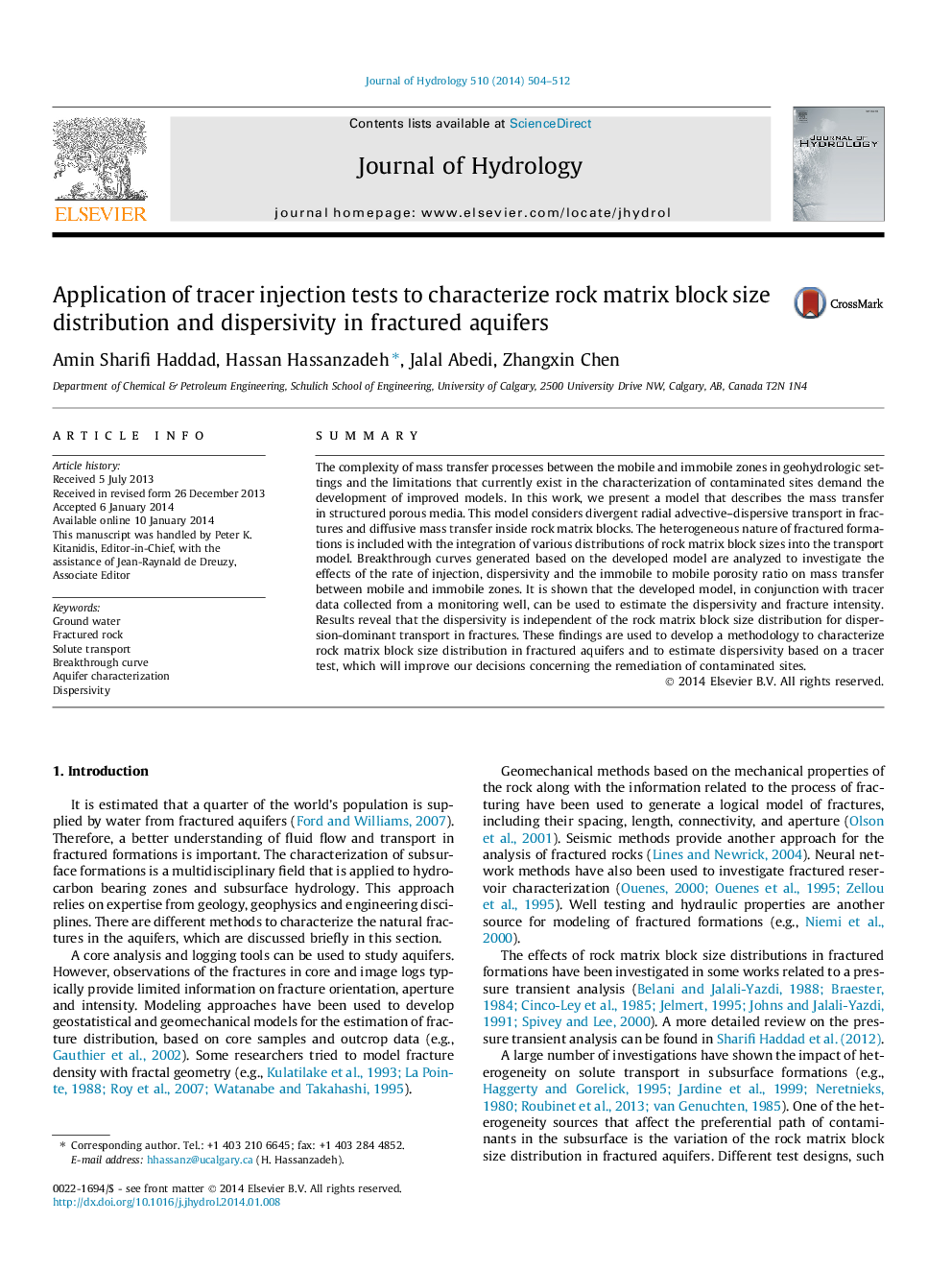| Article ID | Journal | Published Year | Pages | File Type |
|---|---|---|---|---|
| 6413246 | Journal of Hydrology | 2014 | 9 Pages |
â¢A transport model is developed for interpretation of tracer test data.â¢Dispersivity can be predicted from derivative analysis of tracer test data.â¢Rock matrix block size distribution can be predicted using the developed model.
SummaryThe complexity of mass transfer processes between the mobile and immobile zones in geohydrologic settings and the limitations that currently exist in the characterization of contaminated sites demand the development of improved models. In this work, we present a model that describes the mass transfer in structured porous media. This model considers divergent radial advective-dispersive transport in fractures and diffusive mass transfer inside rock matrix blocks. The heterogeneous nature of fractured formations is included with the integration of various distributions of rock matrix block sizes into the transport model. Breakthrough curves generated based on the developed model are analyzed to investigate the effects of the rate of injection, dispersivity and the immobile to mobile porosity ratio on mass transfer between mobile and immobile zones. It is shown that the developed model, in conjunction with tracer data collected from a monitoring well, can be used to estimate the dispersivity and fracture intensity. Results reveal that the dispersivity is independent of the rock matrix block size distribution for dispersion-dominant transport in fractures. These findings are used to develop a methodology to characterize rock matrix block size distribution in fractured aquifers and to estimate dispersivity based on a tracer test, which will improve our decisions concerning the remediation of contaminated sites.
